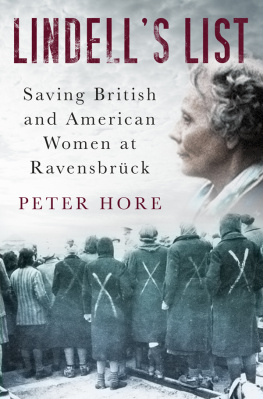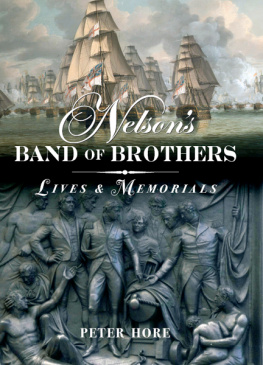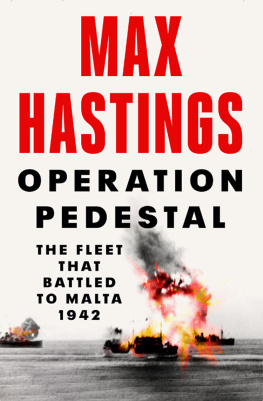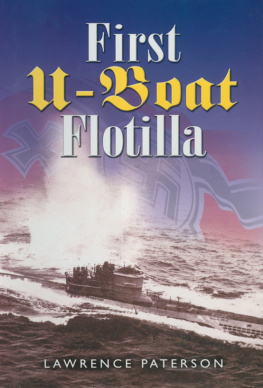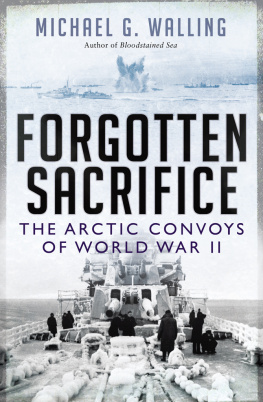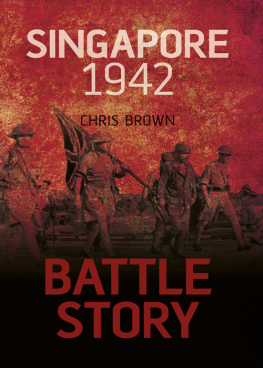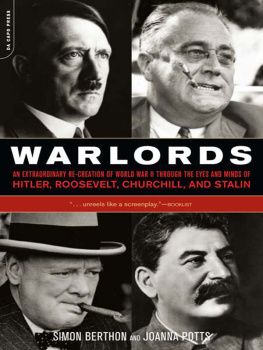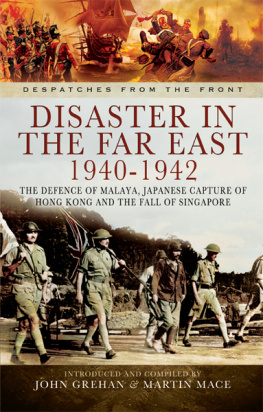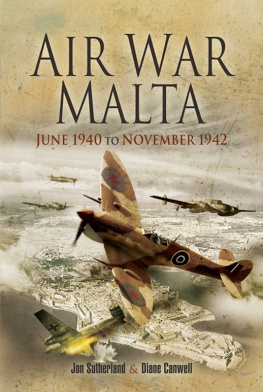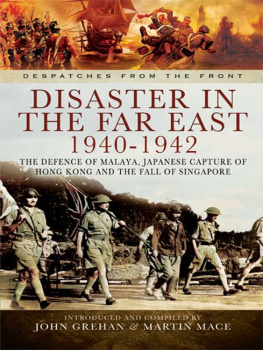LINDELLS LIST
LINDELLS LIST
Saving British
and American
Women at
Ravensbrck
PETER HORE

Front cover illustrations. Top: Mary Lindell (Keystone/Getty Images);
bottom: Female prisoners at Ravensbrck concentration camp at the end of the war (Swedish Red Cross).
First published in 2016
The History Press
The Mill, Brimscombe Port
Stroud, Gloucestershire, GL5 2QG
www.thehistorypress.co.uk
This ebook edition first published in 2016
All rights reserved
Peter Hore, 2016
The right of Peter Hore to be identified as the Author of this work has been asserted in accordance with the Copyright, Designs and Patents Act 1988.
This ebook is copyright material and must not be copied, reproduced, transferred, distributed, leased, licensed or publicly performed or used in any way except as specifically permitted in writing by the publishers, as allowed under the terms and conditions under which it was purchased or as strictly permitted by applicable copyright law. Any unauthorised distribution or use of this text may be a direct infringement of the authors and publishers rights, and those responsible may be liable in law accordingly.
EPUB ISBN 978 0 7509 6945 1
Original typesetting by The History Press
eBook converted by Geethik Technologies
CONTENTS
ACKNOWLEDGEMENTS
T hree people are responsible for the genesis of this book. First, Annie Hamilton, former commandant of the First Aid Nursing Yeomanry, who encouraged me to write about her girls. Annie introduced me to Yvonne Burney (ne Baseden), who told me her story and that of her friend, Mary Lindell, who saved her life in wartime. Annie also introduced me to Michael Foot who, over lunches at the Special Forces Club and the Savill Club, told me about the things he had written about and some of those he had not. I am indebted to all three for their kindness, confidence and the knowledge they imparted.
This work would not have been possible without my travels and research in Belgium, Britain, Denmark, Ireland, France, Germany, Sweden and the USA. In addition to the staff of various archives and libraries in Europe and America, who have been invariably helpful and ready to assist with their knowledge, I would like to thank especially the many courteous and kindly staff at the Imperial War Museum, Kennington and the National Archives at Kew, and in Sweden at Landsarkivet i Lund, at Malm Stadsarkivet and at Malmhuset.
In particular, I wish to thank in alphabetical order: Colonel Edwin W. Anderson, US Army SF; Trish Anderson, senior librarian at the Law Society; Colonel Simon Bailey, Yvonnes son; Iain Ballantyne, guru; Professor Judith Barrett Litoff of Bryant University, Smithfield, RI; Yvonne Baseden, F Section SOE; France Bertram, granddaughter of Lucienne Dixon; Roger Bray, ITV; Lena Breitner; Laurence Bris, mairie de Maulon-Licharre; Roger Bryant, neighbour of Bruce Lindell; Suzanne Cane; Sebastian Claesson of Autoimages; Oliver Clutton-Brock, author; Phillipe Connant in Belgium; Pierre Cosaque; Martyn Cox; Kathleen Dow, University of Michigan; Pierre-Emmanuel Dufayel, Fondation pour la Mmoire de la Dportation; Hilding Ekelund, son of Elisabeth Smith; Isabel Hore Fazan, researcher in Torquay; Magnus Gertten of Autoimages; the late Scott Goodall, father and author of The Freedom Trail; Ian and Elizabeth Granville Miller, residents of Sauveterre-de-Barn; Christer Hgg; Richard Heaune of the German Occupation Museum, Guernsey; Jonas Hedburg from the Nordiska Museet, Stockholm; Pete Jackson, Toquettes son; Keith Janes, escapelines.com; Hans-Gunther Jantzen; Jenny Kauntze, First Aid Nursing Yeomanry; Stephen Kippax, the SOE Society; Karen V. Kukil, William Allan Neilson Library, Smith College, Northampton, MA; Jol Larroque, Collge Saint Franois, Maulon Soule; Michael Moores LeBlanc; Bengt Lindholm, Malm Stadsarkiv; Diane Morgan, RAF Escaping Society; David Murphy, National University of Ireland; Janice OBrien, researcher at Colindale; Bob OHara, researcher at Kew; Sandra J. Ott; Charles Owen, military obituarist at the Daily Telegraph; Philippa Paterson, French translator; Anne-Marie Pavillard, BDIC Service des archives; the late Sune Persson, professor and author; Charles Pinck, the OSS Society; Graham Pitchfork, RAF obituarist at the Daily Telegraph; Major Jo-ann Price, Historical Museum and Historians Office, the Salvation Army, Central Territory, USA; Judith Provoyeur; Edouard Renire, Belgium; Lorraine Riemer, Petes daughter; Suzanne Rodriguez, California; Neasa Roughan, archives assistant at the Royal College of Nursing Archives; Lord Eric de Saumarez, Guernsey; Monika Schnell, Mahn- und Gedenksttte Ravensbrck; Naomi Sharp, the Salvation Army International Heritage Centre; Penny Small, muse and French translator; Sim Smiley, National Archives and Records Administration, College Park, MD, USA; Ewen Southby-Tailyour; Anders Otte Stensager; Annika Tergius, Landsarkivet i Lund; Daniel Thuret; Robert Trembath; Stephen Tyas; Maria van der Tang; Hal Vaughan; Peter Verstraeten; Magnus Waldebron, Malm Museum; and Pam Zimmerman.
With a special thanks to all those friends and companions who helped me in 2014 to walk the Chemin de la Libert in the footsteps of Mary Lindells escapers.
No work can be adequately completed without a first-class publications team, and I would like to thank Michael Leventhal, Jo de Vries, and all at The History Press, especially Chrissy McMorris, the unknown reader, Martin Latham and Jemma Cox.
AUTHORS FOREWORD
T he title of this book is based on an actual incident in April 1945 when the SS guards at Ravensbrck denied that they held any American or British women prisoners, and Mary Lindell produced her list from her pinafore pocket. Prior to this incident, through the black night of despair that fell on France in 1940 and the years of German occupation and oppression which followed, Marys passionate opposition to tyranny was turned into practical deeds. The flame of her patriotism could not be dimmed, she was fearless to the point of foolhardiness, and she continued her resistance to the Nazis even when thrown into Ravensbrck, a concentration camp which was known as the Womens Hell, where tens of thousands were murdered.
Mary held strong opinions and she defied the British, French, German and Swedish authorities in pursuit of what she believed to be right, and when tested in the horrors of war, and life in the concentration camp, she showed herself to be patriotic, determined, careless of her own life and convinced of the righteousness of her cause. She was not young and beautiful like some of the agents who, after the war, stood in the limelight. Her bravery was sustained through more than five years of war, under the most difficult of conditions and personal danger to her and to her family.
The best-known version of Mary Lindells life is Barry Wynnes 1961 book, No Drums No Trumpets, which has since been republished under different titles. This was written after Wynne and Mary had been closeted in a hotel in England for several weeks, at the end of which Mary was sick and tired of the whole process of interview and re-interview. The book was a mess, she told the American feminist Margaret L. Rossiter when interviewed by her, and when pressed by Rossiter as to whether the facts in No Drums No Trumpets could be relied upon, Mary replied, coyly, Mostly.
Starting in 1976, Rossiter taped many interviews, now in the University of Michigan State University special collections, for her 1986 book, Women in the Resistance. Her interviewees included many heroes and heroines of the French Resistance, including Mary Lindell, and when her hours of interviews with Mary were synthesised into one chapter, Rossiter gave possibly the best description of Mary Lindell:
Next page
